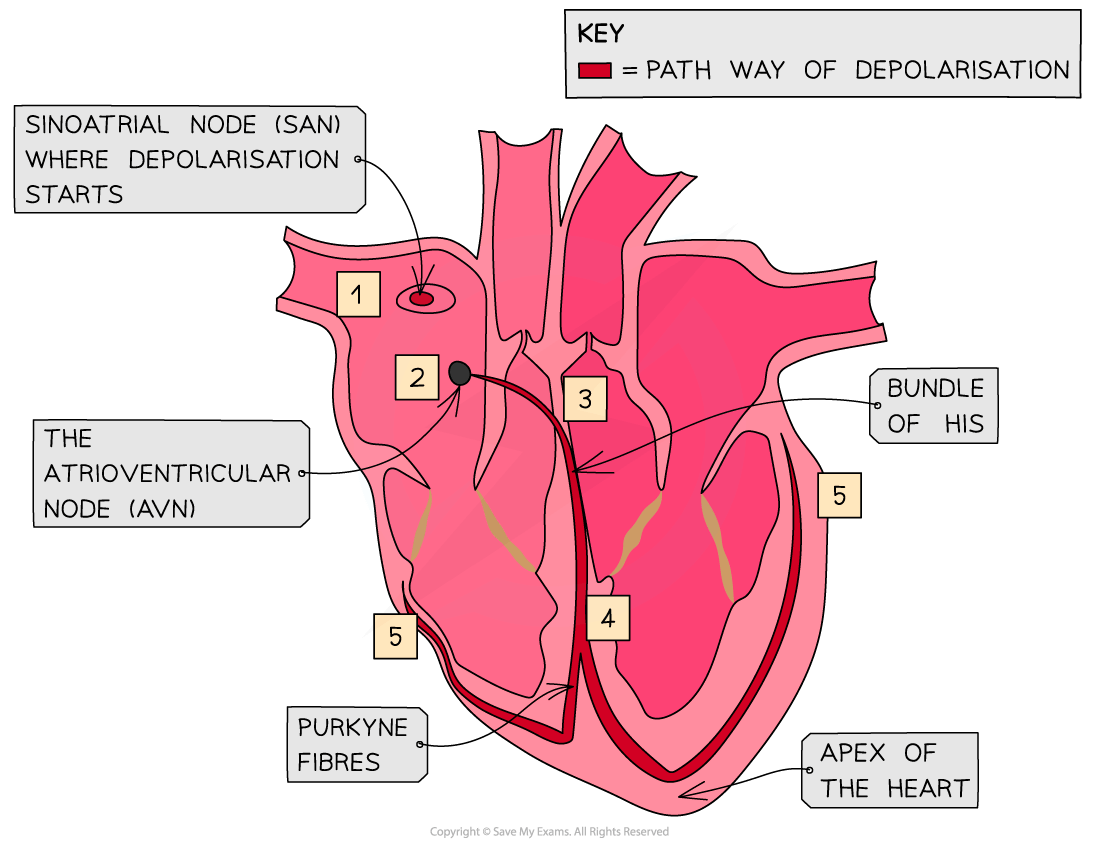Heart Action (Cambridge (CIE) A Level Biology): Revision Note
Exam code: 9700
Heart action: initiation & control
Control of the basic heartbeat is myogenic, which means the heart will beat without any external stimulus
This intrinsic rhythm means the heart beats at around 60 times per minute
The sinoatrial node (SAN) is a group of cells in the wall of the right atrium
The SAN initiates a wave of depolarisation that causes the atria to contract
The Annulus fibrosus is a region of non-conducting tissue which prevents the depolarisation spreading straight to the ventricles
Instead, the depolarisation is carried to the atrioventricular node (AVN)
This is a region of conducting tissue between atria and ventricles
After a slight delay, the AVN is stimulated and passes the stimulation along the bundle of His
This delay means that the ventricles contract after the atria
The bundle of His is a collection of conducting tissue in the septum (middle) of the heart
The bundle of His divides into two conducting fibres, called Purkyne tissue, and carries the wave of excitation along them
The Purkyne fibres spread around the ventricles and initiate the depolarization of the ventricles from the apex (bottom) of the heart
This makes the ventricles contract and blood is forced out of the pulmonary artery and aorta
Stage in cardiac cycle sequence | Event |
|---|---|
1 | Sinoatrial node sends out a wave of excitation |
2 | Atria contract |
3 | Atrioventricular node sends out a wave of excitation |
4 | Purkyne tissue conducts the wave of excitation |
5 | Ventricles contract |

Examiner Tips and Tricks
Remember that the heart is myogenic, which means that the heart will generate a heartbeat by itself and without any other stimulation. Instead, the electrical activity of the heart regulates the heart rate. Be aware that you may sometimes see an alternative spelling of "Purkyne" as "Purkinje" they mean the exact same thing!

Unlock more, it's free!
Did this page help you?